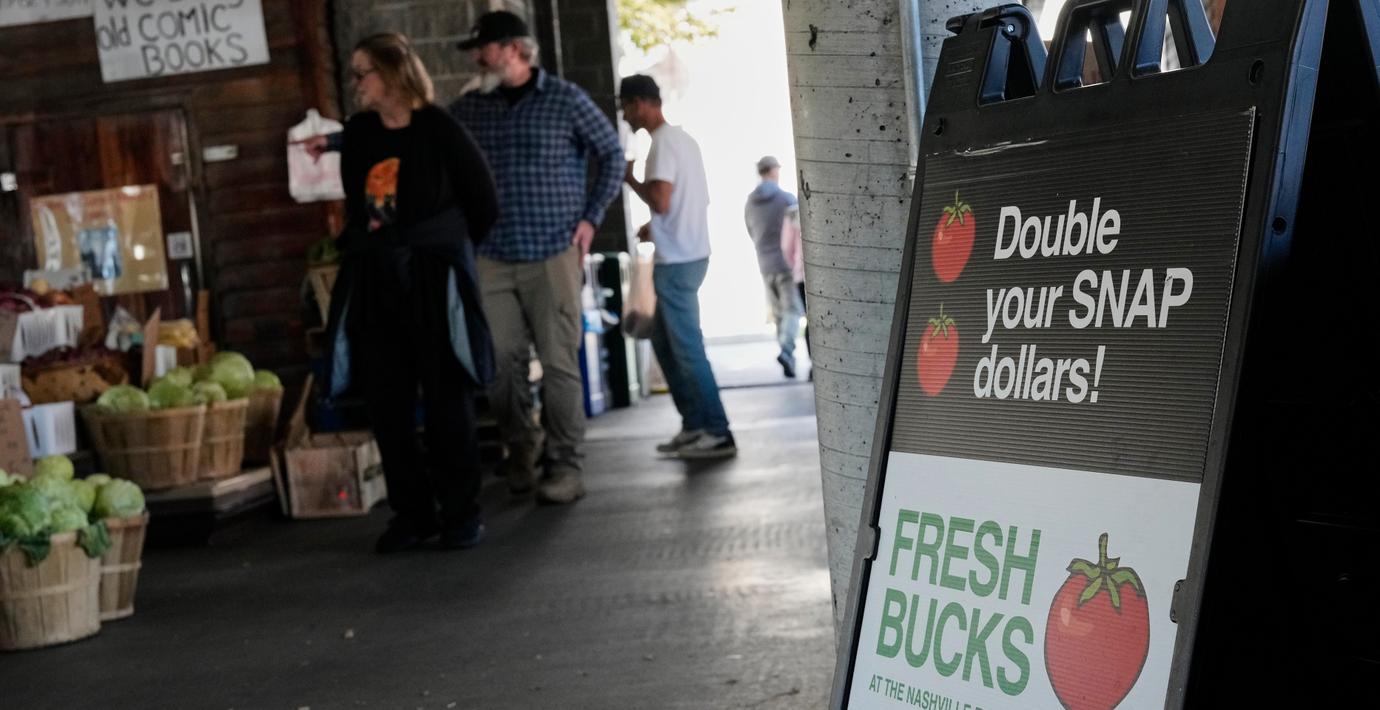
Trump trotsar domstol – utpressar Demokraterna med matkuponger
Det blir ingen utdelning av matkuponger till behövande i USA förrän Demokraterna går med på att bryta nedstängningen av statsapparaten. Det uppger president Donald Trump på tisdagen, i trots mot ett domstolsbeslut om att åtminstone delar av matstödet måste delas ut, rapporterar amerikanska medier.
I ett inlägg på Truth Social skriver han att matstödet ska ges ”först när radikalvänster-demokraterna öppnar statsapparaten”, enligt CBS. Nedstängningen som hittills varat i 35 dagar blir den längsta i landets historia om den fortsätter.
42 miljoner amerikaner, ungefär en åttondel av medborgarna, får matkuponger genom programmet. Den amerikanska statsapparaten har varit nedstängd sedan den 1 oktober på grund av en blockerad budget, enligt TT.
Supplemental Nutrition Assistance Program (SNAP)
Wikipedia (en)
The Supplemental Nutrition Assistance Program (SNAP), formerly and colloquially still known as the Food Stamp Program, or simply food stamps, is a United States federal government program that provides food-purchasing assistance for low- and no-income persons to help them maintain adequate nutrition and health. It is a federal aid program administered by the U.S. Department of Agriculture (USDA) under the Food and Nutrition Service (FNS), though benefits are distributed by specific departments of U.S. states (e.g., the Division of Social Services, the Department of Health and Human Services, etc.).
In 2018, SNAP benefits supplied roughly 40 million Americans, at an expenditure of $57.1 billion. In 2017, approximately 9.2% of American households obtained SNAP benefits at some point, with approximately 16.7% of all children living in households with SNAP benefits. Beneficiaries and costs increased sharply with the Great Recession, peaked in 2013 and declined to 2017 as the economy recovered. It is the largest nutrition program of the 15 administered by FNS and is a key component of the social safety net for low-income Americans.
The amount of SNAP benefits received by a household depends on the household's size, income, and expenses. For most of its history, the program used paper-denominated "stamps" or coupons—worth $1 (brown), $5 (blue), and $10 (green)—bound into booklets of various denominations, to be torn out individually and used in single-use exchange. Because of their 1:1 value ratio with actual currency, the coupons were printed by the Bureau of Engraving and Printing. Their rectangular shape resembled a U.S. dollar bill (although about one-half the size), including intaglio printing on high-quality paper with watermarks.
In the late 1990s, the Food Stamp Program was revamped, with some states phasing out actual stamps in favor of a specialized debit card system known as electronic benefit transfer (EBT), provided by private contractors. EBT has been implemented in all states since June 2004. Each month, SNAP benefits are directly deposited into the household's EBT card account. Households may use EBT to pay for food at supermarkets, convenience stores, and other food retailers, including certain farmers' markets.
Omni är politiskt obundna och oberoende. Vi strävar efter att ge fler perspektiv på nyheterna. Har du frågor eller synpunkter kring vår rapportering? Kontakta redaktionen



